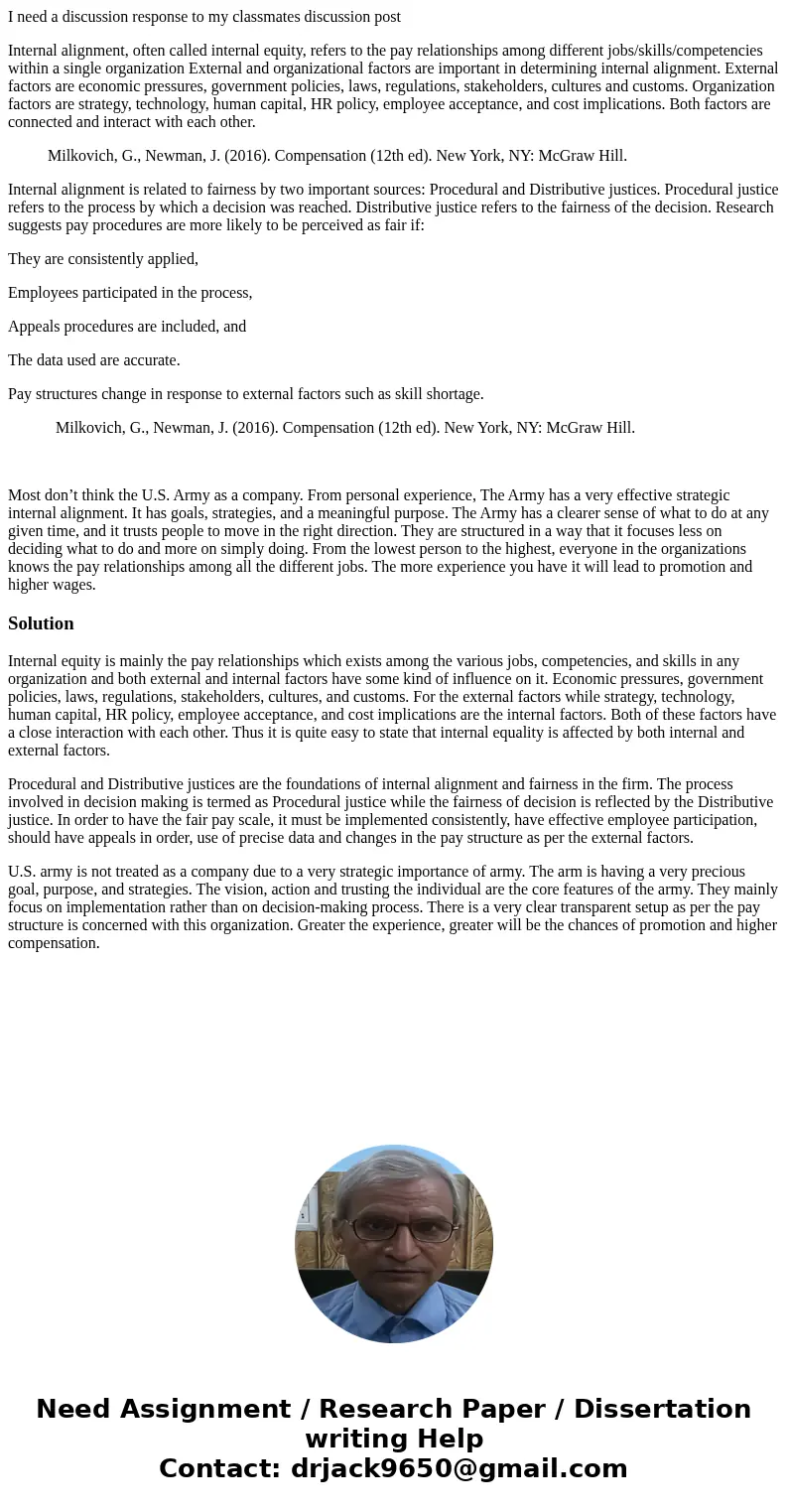I need a discussion response to my classmates discussion pos
I need a discussion response to my classmates discussion post
Internal alignment, often called internal equity, refers to the pay relationships among different jobs/skills/competencies within a single organization External and organizational factors are important in determining internal alignment. External factors are economic pressures, government policies, laws, regulations, stakeholders, cultures and customs. Organization factors are strategy, technology, human capital, HR policy, employee acceptance, and cost implications. Both factors are connected and interact with each other.
Milkovich, G., Newman, J. (2016). Compensation (12th ed). New York, NY: McGraw Hill.
Internal alignment is related to fairness by two important sources: Procedural and Distributive justices. Procedural justice refers to the process by which a decision was reached. Distributive justice refers to the fairness of the decision. Research suggests pay procedures are more likely to be perceived as fair if:
They are consistently applied,
Employees participated in the process,
Appeals procedures are included, and
The data used are accurate.
Pay structures change in response to external factors such as skill shortage.
Milkovich, G., Newman, J. (2016). Compensation (12th ed). New York, NY: McGraw Hill.
Most don’t think the U.S. Army as a company. From personal experience, The Army has a very effective strategic internal alignment. It has goals, strategies, and a meaningful purpose. The Army has a clearer sense of what to do at any given time, and it trusts people to move in the right direction. They are structured in a way that it focuses less on deciding what to do and more on simply doing. From the lowest person to the highest, everyone in the organizations knows the pay relationships among all the different jobs. The more experience you have it will lead to promotion and higher wages.
Solution
Internal equity is mainly the pay relationships which exists among the various jobs, competencies, and skills in any organization and both external and internal factors have some kind of influence on it. Economic pressures, government policies, laws, regulations, stakeholders, cultures, and customs. For the external factors while strategy, technology, human capital, HR policy, employee acceptance, and cost implications are the internal factors. Both of these factors have a close interaction with each other. Thus it is quite easy to state that internal equality is affected by both internal and external factors.
Procedural and Distributive justices are the foundations of internal alignment and fairness in the firm. The process involved in decision making is termed as Procedural justice while the fairness of decision is reflected by the Distributive justice. In order to have the fair pay scale, it must be implemented consistently, have effective employee participation, should have appeals in order, use of precise data and changes in the pay structure as per the external factors.
U.S. army is not treated as a company due to a very strategic importance of army. The arm is having a very precious goal, purpose, and strategies. The vision, action and trusting the individual are the core features of the army. They mainly focus on implementation rather than on decision-making process. There is a very clear transparent setup as per the pay structure is concerned with this organization. Greater the experience, greater will be the chances of promotion and higher compensation.

 Homework Sourse
Homework Sourse